Korean nightmare: Experts ponder potential conflict
By Andrew Salmon, for CNN
March 27, 2013 -- Updated 0928 GMT (1728 HKT)
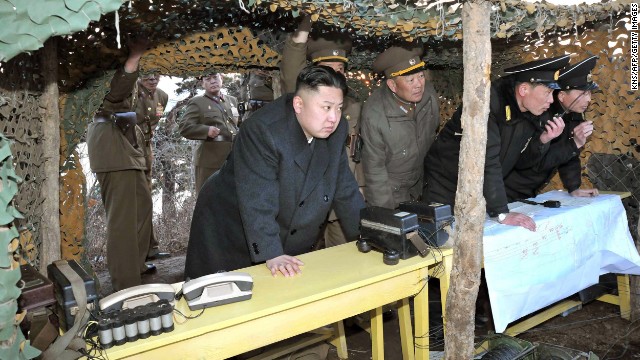 North Korean leader Kim Jong Un
inspects drills by the Korean People's Army (KPA) Navy at an undisclosed
location on North Korea's east coast in a photo from the state-run
Korean Central News Agency taken on March 25, 2013.
North Korean leader Kim Jong Un
inspects drills by the Korean People's Army (KPA) Navy at an undisclosed
location on North Korea's east coast in a photo from the state-run
Korean Central News Agency taken on March 25, 2013.
Kim Jong Un and North Korea's military
<<
<
1
2
3
4
5
6
7
8
9
10
11
12
13
14
15
16
17
18
19
20
21
22
23
24
25
26
27
28
>
>>
Editor's note: Andrew
Salmon is a South Korea-based freelance journalist and author who has
written two books on the Korean war. Below, he envisages a hypothetical,
worst-case scenario of potential conflict on the Korean peninsula. CNN
is not suggesting that war is imminent or even likely, but the
possibility of conflict is one scenario that military strategists must
consider given recent heightened tensions.
Seoul (CNN) -- It's Asia's nightmare scenario: War breaking out on the Korean peninsula.
With Korea lying at the
heart of Northeast Asia, the world's third largest zone of economic
activity after Western Europe and North America, experts say global
capital markets would suffer devastating collateral damage, but the
catastrophic loss of human life -- and potential nuclear fallout --
would be far, far worse.
Fortunately, no analysts
believe "Korean War II" is imminent; the armistice ending the 1950-53
conflict that buried millions continues to hold, despite North Korea's
nullification in March. And with regime maintenance Pyongyang's
paramount policy, few think it would risk an attack.
But Kim Jong Un's experience and
rationality is being questioned following
his recent missile and nuclear tests, his annulment of the armistice
and his bellicose vitriol -- extreme even by Pyongyang standards.
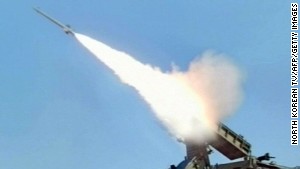 Cha: N. Korea 'has the range' to strike
Cha: N. Korea 'has the range' to strike
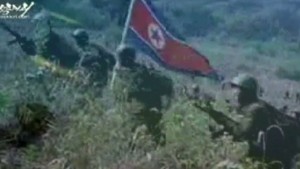 North Korea's war video threatens U.S.
North Korea's war video threatens U.S.
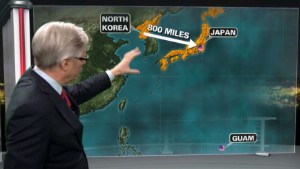 Ominous new threat from North Korea
Ominous new threat from North Korea
 Experiencing a potential cyberattack
Experiencing a potential cyberattack
Rodman reveals North Korea secrets
Despite annulling the
armistice, a consistent Pyongyang demand has been a full peace treaty
and it also wants direct talks with the United States, which Washington
has resisted, preferring instead multilateral discussions.
Agreement with U.S.
Now, North Korea's
actions are fueling concern; so much so that South Korea and the U.S.
recently announced they had signed an agreement to firm up contingency
plans should North Korea follow through on its threats.
At the time, Pentagon
spokesman George Little said the flights were to ensure the combined
forces were "battle-trained and trained to employ air power to deter
aggression."
Military strategists are
clearly preparing for all eventualities. And it seems the South's
citizens are also bracing for possible conflict.
The Asan Institute, a Seoul think tank, found that in 2012, ordinary South Koreans of all age groups believed war was more likely than not.
'Invasion unlikely'
At present, a second
1950-style North Korean invasion seems unlikely, but possibilities that
could ignite the peninsula tinderbox exist.
"I don't think any
parties want all-out war, but scenarios to arrive at that outcome are
some kind of miscalculation or inadvertent escalation," said Dan
Pinkston, who heads the
International Crisis Group's Seoul office. "The problem is that, considering recent developments, the escalation ladder has been getting shorter."
After fatal incidents in 2010, South Korea
eased its rules of engagement, enabling speedier counter attacks to Northern attacks such as naval or artillery strikes.
And in February, South Korea's top general told Seoul's National Assembly of
plans for pre-emptive strikes if intelligence indicated North Korean nuclear attack preparations.
Pre-emption is critical, given the close proximity of the two Koreas.
"Once we detect long range artillery and missiles being prepared, we would have no choice but to strike," said Kim Byung-ki,
a professor at Seoul's Korea University; it takes only three minutes
for a North Korean plane to reach Seoul, and under a minute for
artillery shells to hit.
America committed
Analysts fear a limited
Northern attack might provoke a Southern response, sparking a spiral of
escalation and the dreaded "big war." With Seoul and Washington bound by
treaty, America would have to commit. "Politically, the U.S. would have
to be seen to support South Korea," said James Hardy, Asia Editor at
defense publication IHS Jane's. "If it did not, its defense policy in
Asia-Pacific would be in tatters."
North Korea's 1.1
million strong Korean People's Army, or KPA, is nearly double the size
of the 640,000-person South Korean military and the 28,000 U.S. troops
stationed in Korea.
Much of North Korea's
military is believed to be decrepit: It lacks fuel, fields outdated
equipment, and some troops are undernourished, but it wields two niche
threats: special forces and artillery.
In
a report in March last year,
the commander of U.S. and U.N. forces in South Korea, General James
Thurman, warned that North Korea has continued to improve the
capabilities of the world's largest special operations force -- highly
trained specialists in unconventional, high-risk missions.
Pyongyang fields 60,000
special forces, according to Gen. Thurman -- and more than 13,000
artillery pieces, most of it deeply dug in along the DMZ, and ranged on
Seoul; the dense capital sprawls just 30 miles (48 kilometers) south of
the border.
If North Korea employs biological weapons, it could use highly pathogenic agents such as anthrax or plague
Gen. Thurman, March 2012
Moreover, with its
main-force numbers and weight of firepower, the KPA might be able to
concentrate offensive units with enough mass to punch across the
fortified DMZ, through South Korean second echelon defenses, and barrel
toward the Seoul region, an area with 24 million people.
Still, given the KPA's
logistic weakness and inability to sustain battlefield operations,
analysts expect an offensive lasting only three days to one week, after
which Pyongyang could negotiate from a position of strength.
Commando force
Meanwhile, could South
Korean forces hold long enough for U.S. troops to massively reinforce?
Could U.S. forces operate effectively with their bases in Korea -- and
possibly Japan, Okinawa and Guam-- under attack by KPA commandos and
missiles? These are the imponderables.
Commandos would provide
the KPA's spearhead, infiltrating by air, sea and probably under
civilian cover to assault South Korean infrastructure and U.S. bases,
degrading Seoul's command and communications capabilities and stemming
U.S. reinforcements, said Kim of Korea University. Chaos would likely be
increased by electronic jamming measures and cyber attacks. Meanwhile,
KPA artillery could fire thousands of shells in their opening barrage,
Kim estimated.
Still, questions hang
over the KPA's war-worthiness. During Pyongyang parades, goose-stepping
battalions display the world's finest close-order drill, but under U.S.
aerial bombardment, might Kim's legions -- like Saddam Hussein's --
crack?
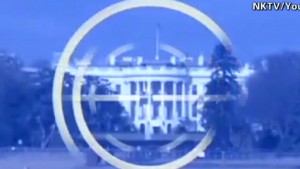 North Korean video targets White House
North Korean video targets White House
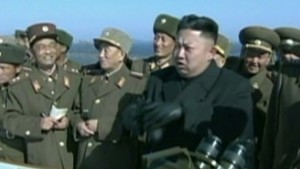 Nuclear fears in South Korea
Nuclear fears in South Korea
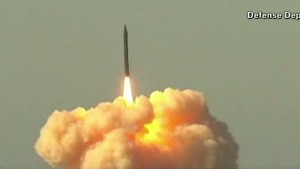 U.S. to boost missile defense
U.S. to boost missile defense
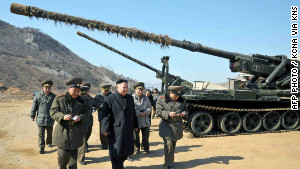 Kim Jong Un: Break enemies' waists
Kim Jong Un: Break enemies' waists
It seems unlikely. When
North Korean troops have engaged -- notably in Yellow Sea clashes in
1999, 2002 and 2010, and in commando raids in 1968 and 1996 -- they have
proven skilled and motivated.
But neither special
forces nor artillery are war winners alone: They cannot seize and hold
ground. The KPA's biggest weakness is the vulnerability of its main
force units once they begin to maneuver.
Aerial bombardment
The U.S. and South Korea
could fight a three-dimensional battle: KPA infantry and armored units
would be pummeled by 24-7 U.S. aerial bombardment; its forces would also
be vulnerable to heli-borne envelopment; and, because Korea is a
peninsula, the North could be flanked by sea in amphibious operations.
Still, if the KPA ran
the 30-mile gauntlet from the border and broke into Seoul, a city vaster
than Stalingrad, it would be easy to cut off but difficult to evict.
Close combat among Korea's hills and streets could prove murderous.
"They're not Saddam's
army, they're likely to fight like the Japanese in the Pacific," said
Pinkston, referring to Japan's last-ditch island stands of 1944-5. "They
would be paranoid about what would happen if they surrendered."
Destroying North Korean
artillery shelling Seoul -- much of it emplaced in tunnels that have
been dug over decades -- would be another stern task. Kim noted that
U.S. "bunker buster" bombs used in Iraq were originally designed for use
against North Korea.
Seoul and Washington
possess precision-guided munitions. Bombs or missiles bursting in bunker
entrances could bury KPA artillery and air force units, analysts say.
But the South Korean capital would likely take a severe pounding --
possibly with unconventional weapons.
Bio hazard
Last March, Thurman
said: "If North Korea employs biological weapons, it could use highly
pathogenic agents such as anthrax or the plague. In the densely
populated urban terrain of the ROK, this represents a tremendous
psychological weapon."
A marine or airborne
landing to its rear are options to take out North Korea's gun line; the
question is how much damage Seoul would suffer before such operations
could be launched. KPA missiles are an additional threat: As coalition
forces discovered in Gulf War I, finding and destroying mobile launchers
is tremendously difficult.
Yet with U.S. air power
constantly degrading KPA units, communications, headquarters and
logistics nationwide, experts see no way for Pyongyang to win a
sustained war. If South Korea and the U.S. attack into the North, the
wild card is Beijing, with whom Pyongyang has a mutual defense treaty.
I don't think any parties want all-out war, but scenarios to arrive
at that outcome are some kind of miscalculation or inadvertent
escalation.
Dan Pinkston, International Crisis Group
Northern Korea guards
China's northeast: throughout history, a strategic flank. In 1950, with
North Korea largely overrun by U.N. forces, Beijing intervened, saving
the state from extinction. Pundits say Beijing would not support a
Pyongyang offensive, but would defend her -- suggesting Kim's regime
could survive a war, as his grandfather did.
"China will support
North Korea, but only on North Korean territory," said Choi Ji-wook,
head North Korea researcher at Seoul's Korea Institute of National
Unification. "They will not support a North Korean army attacking South
Korean territory."
Tough stance
Washington wants a
tougher Chinese stance toward North Korea, but it is unclear whether
Beijing's six-decade policy of support has altered significantly.
While supporting a vote
to impose tougher sanctions on North Korea after its nuclear test, China
recently criticized an announcement from the U.S. that it was beefing
up defense systems along the U.S. West Coast.
"Bolstering missile defenses will only intensify antagonism,
and it doesn't help to solve the issue," Hong Lei, a spokesman for the
Chinese Ministry of Foreign Affairs, said at a regular news briefing in
Beijing.
And regardless of the Chinese role, Kim Jong Un, North Korea's young leader, possesses a doomsday option: The nuclear button.
Currently, Pyongyang is
not believed to have a missile-mounted nuclear warhead, but it may in
years to come. Experts believe the North has rockets able to hit
Japan or South Korea with air, land or sea-delivered nuclear devices or
dirty bombs. If Kim detonated a nuclear device, it would guarantee
apocalyptic retaliation and war crimes trials for any regime survivors
-- but if all looked lost, that possibility stands.
"We've never been in a
situation where a nuclear-armed country has had to make that kind of
call," mused Hardy. "If the leadership is going down like the Third
Reich, this kind of last gasp action is possible," added Pinkston.
Were the regime in
Pyongyang overthrown by war, the positives would be extensive. South
Korea would gain a land connection to the Eurasian continent; a
strategic casus belli would evaporate; northern Korea could be rebuilt
and its people ushered into the global community; and Northeast Asia
could advance toward regional integration.
But given the
destructiveness of modern weaponry and the dense populations of both
Koreas, experts pray "Korean War II" never happens.
"The casualties in a
short time would be unlike anything we have seen before: hundreds of
thousands in days, millions in weeks," said Pinkston. "The fighting in
Iraq, Afghanistan and Syria would pale in comparison."
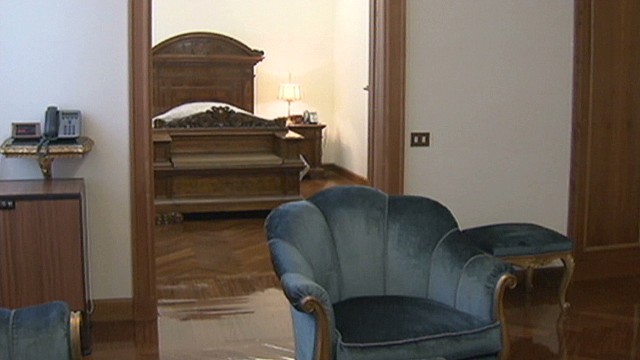
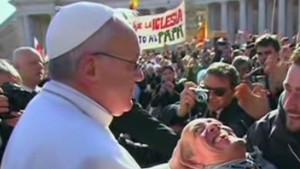 Pope Francis to wash feet of prisoners
Pope Francis to wash feet of prisoners
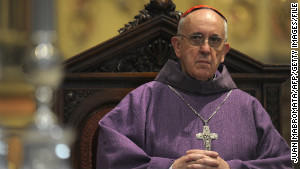 Priests hope to clear Pope Francis' name
Priests hope to clear Pope Francis' name
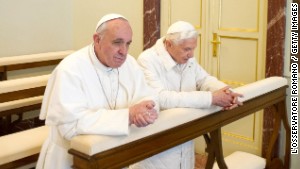 Pope Francis meets with Benedict XVI
Pope Francis meets with Benedict XVI
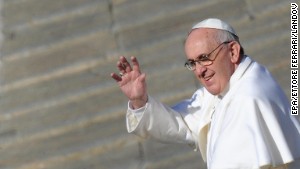 Will Pope Francis be a reformer?
Will Pope Francis be a reformer?

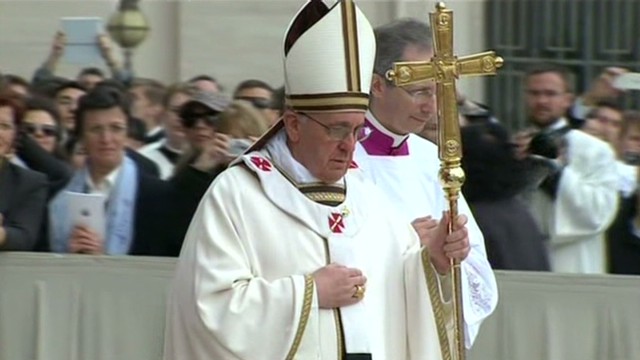

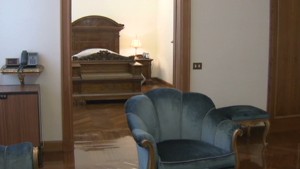
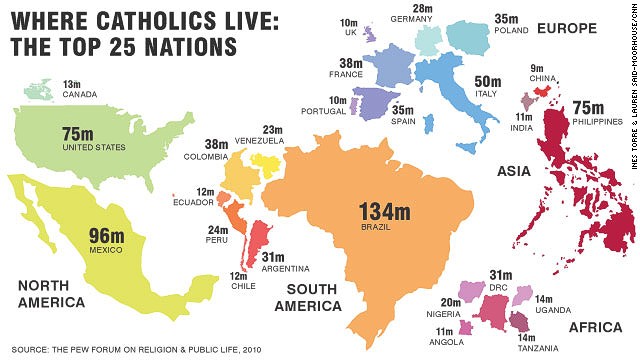
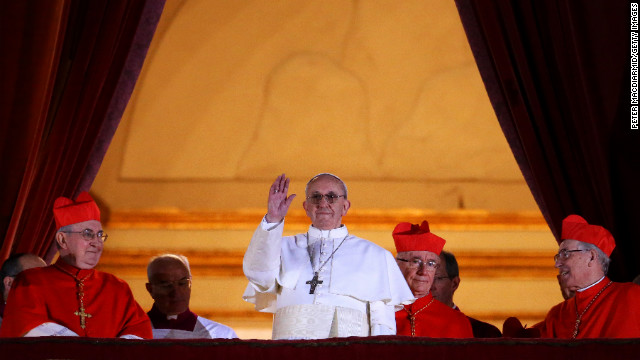
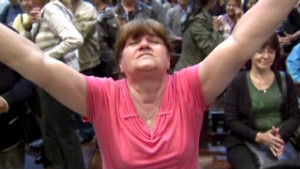
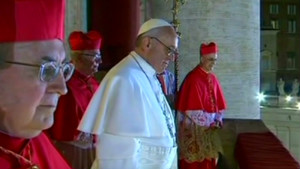
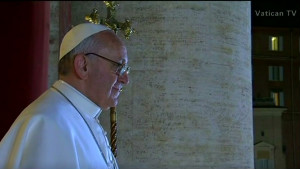
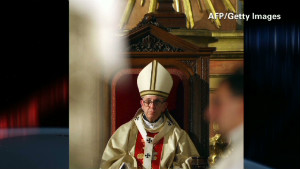
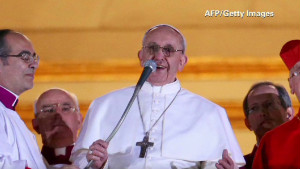
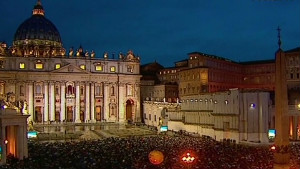
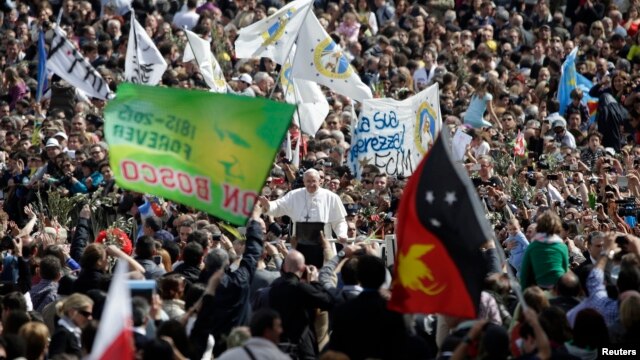


 North Korean leader Kim Jong Un
inspects drills by the Korean People's Army (KPA) Navy at an undisclosed
location on North Korea's east coast in a photo from the state-run
Korean Central News Agency taken on March 25, 2013.
North Korean leader Kim Jong Un
inspects drills by the Korean People's Army (KPA) Navy at an undisclosed
location on North Korea's east coast in a photo from the state-run
Korean Central News Agency taken on March 25, 2013.







